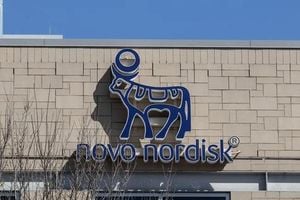Tesla has recently stirred up quite the chatter with its ambitious design for its new robotaxi, presented at a much-anticipated event held in Los Angeles. The vision for this vehicle, characterized as sporty and sleek, features two doors rather than the expected four, which has left many experts scratching their heads. Investors were clearly unimpressed, resulting in Tesla stocks sliding by 9% following the announcement.
Critics, including sources from leading market research firms, are pointing out the obvious shortfalls of this design, arguing it doesn't align with what consumers expect from taxi-like services. The company’s decision to develop what many dub a "two-seater robotaxi" raises concerns about its practicality and marketability. After all, wouldn't most people prefer something spacious—more room for passengers, luggage, and of course, the occasional grocery bag? It turns out the internal layout isn't just about what looks attractive; it's about functionality and utility, which experts broadly feel Tesla missed the mark on.
Commenting on this baffling approach, Sandeep Rao, senior researcher at Leverage Shares, expressed skepticism about the market's enthusiasm for two-door configurations. “The market for two-door robotaxis would be very limited,” he stated, raising questions about Tesla's strategic foresight. Rao's insights reflect the sentiment shared by experts who suggest the vehicle should have more room, similar to regular taxis, enhancing its appeal to everyday consumers.
Adding to the chorus of critique is the former CEO of Waymo, who did not hold back when sharing his thoughts about this unconventional design. He stated, "It seems more like play than serious business," critiquing Tesla’s focus on aesthetic over function. For many people, the era of self-driving cars is not just about making waves with unconventional designs but delivering real value and convenience.
Yet, behind the design drama lurks another important player on Tesla’s innovation stage: Optimus, Tesla's humanoid robot. This project was also covered during the event, adding another layer to Tesla's grand ambitions. While the robot has caught attention for its futuristic promise, its current functionalities veer more toward experimental than practical. Elon Musk envisions Optimus playing supportive roles, such as assisting with mundane tasks, operating within factories, and potentially impacting sectors like hospitality.
This broader vision for Tesla's robotaxi and Optimus intertwines with the company's overall commitment to automation and innovative solutions. The question emerges: how will Tesla balance their vision for robotaxi mass production with consumer expectations and functionality? Perhaps the development of Optimus serves as a reminder of the challenges they face, as creating technology requires more than just eye-catching designs.
The presentation underscored the fundamental tension between technology-driven dreams and practical requirements. This situation leaves investors and consumers pondering whether Tesla's audacious spirit will align with actual results when roadside robotaxis become commonplace.
Meanwhile, the industry watches other players, waiting to see how they will respond and advance. Companies like Waymo and Cruise offer insights from their own self-driving journeys which, unlike Tesla's current developments, lean toward practicality without sacrificing user experience.
Given all these developments, one must wonder, is the future of transportation going to be driven by companies focusing on glitzy designs, or will functionality and user experience take precedence? The future remains uncertain but what’s clear is the imperative for companies to provide both utility and innovation. Only then can they truly lead the way forward.
While Tesla's ambitious initiatives are being talked about, it remains to be seen if they will meet expectations and how these designs will cater to real-world needs. If Tesla can pivot and focus on making their vehicles more accommodating, as well as bolstering their robot initiative with real-world applications, they may just reclaim investor confidence and consumer excitement.
At the end of the day, the talk around Tesla’s plans shines a spotlight on the growing importance of usability alongside technological advancement. With minds like Musk at the helm, the innovative spirit at Tesla isn’t slowing down, but it certainly raises the question: will practicality catch up with electric excitement?



